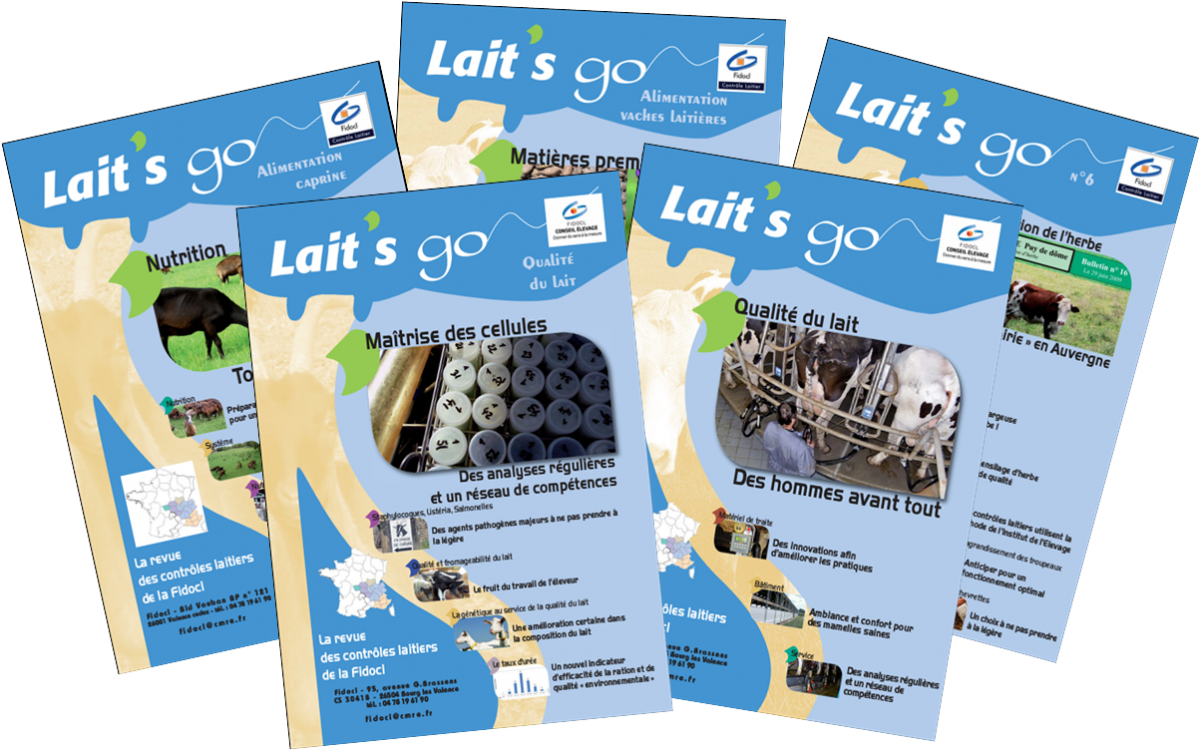Agrégateur de flux
Holstein cow milk–derived Lactobacillus plantarum L19 alleviates heat stress–induced liver injury in mice by modulating gut microbiota. By Wang et al., page 17. This study is the first to demonstrate that Lactiplantibacillus plantarum L19, a lactic acid bacterium isolated from Holstein cow milk, effectively alleviates heat stress–induced liver injury in mice. It broadens the application of cow milk–derived lactic acid bacteria, offers new strategies for managing heat-induced liver injury in humans and animals, and provides a scientific basis for using lactic acid bacteria in related disease prevention.
Editorial Board
CONTENTS
Corrigendum to “Perspective: Challenges with product testing in powdered infant formula” (J. Dairy Sci. 105:8591–8593)
This article contained an incorrect technical explanation for the discrepancy observed between 2 statistical models (ICMSF and JERMA), in which the authors initially attributed the difference to how the models account for lot size.
Corrigendum to “Evaluating GreenFeed and respiration chambers for daily and intraday measurements of enteric gaseous exchange in dairy cows housed in tiestalls” (J. Dairy Sci. 107:10913–10931)
In this article, metabolic heat production (MHP) was incorrectly calculated on a mass basis (g/d) rather than on a volume basis (L/d). The authors have recalculated all affected values, and the updated values appear in boldface in the article text and Table 2 below. The correct versions of Figure 7 and Figure 8 also appear below.
Notice of RETRACTION: “The impact of alternative nitrogen sources on the growth and viability of Lactobacillus delbrueckii ssp. bulgaricus” (J. Dairy Sci. 105:7986–7997)
The editor in chief elected to retract this article (Ayivi et al., 2022a) because it duplicates significant parts of a paper that had already appeared in the Journal of Dairy Research (Ayivi et al., 2022b).
A note from the Journal of Dairy Science Editor in Chief
I am incredibly honored to be the new Editor in Chief of the Journal of Dairy Science, and would like to thank Paul Kononoff for his leadership of the journal over the past 6 yr. He has truly led the journal during a time in which science and publishing have been accelerating in new ways, requiring foresight and rapid adaptation to new challenges, and leaving the journal in the best place it has ever been. I have been working with Paul over the past few months to ensure a smooth transition, with the hope of continuing the momentum, growth, and success of our journal.
Detection of 13 quinolones in milk by a Pseudomonas quinolone signaling receptor-based competitive chemiluminescence assay
The list of standard abbreviations for JDS is available at adsa.org/jds-abbreviations-24. Nonstandard abbreviations are available in the Notes.
Longitudinal characterization of fecal lipids in dairy heifers from birth to first calving
The developmental phases of dairy heifers, from birth to first calving, are characterized by major changes in nutrition, gastrointestinal tract physiology and metabolism. Fecal metabolomics offers a powerful, noninvasive approach to understanding the intricate interplay between host metabolism, gut health, and the evolving gut microbiota. However, the longitudinal dynamics of fecal lipids are poorly characterized across these phases. The aim of this study was to characterize and quantify fecal lipid classes and their temporal dynamics in Holstein heifers at key time points from birth to first calving.
Effects of Dietary Starch and Fatty Acid Supplementation on Milk Production and Metabolic Responses During the Immediate Postpartum in Dairy Cows
This study aimed to investigate the interaction between dietary starch and fatty acid (FA) supplementation on production responses in multiparous Holstein cows. Sixty multiparous Holstein cows were used in a randomized complete block design and assigned to one of 4 treatments in a 2 × 2 factorial arrangement. Treatment diets were fed from 1 to 23 d postpartum (fresh period; FR): (1) a diet containing 22% DM starch and no supplemental FA (LS); (2) a diet containing 28% DM starch and no supplemental FA (HS); (3) diet containing 22% DM starch and a calcium salt containing 70% C16:0 and 20% cis-9 C18:1 (LS+FA); and (4) a diet containing 28% DM starch and a calcium salt containing 70% C16:0 and 20% cis-9 C18:1 (HS+FA).
The interaction of essential fatty acids and conjugated linoleic acid on regulation of milk synthesis and the formation of milk ingredients from [13C6]-glucose during early lactation in dairy cows
Long-chain fatty acids such as essential fatty acids (EFA) and CLA have the potential to affect glucose metabolism and milk synthesis in the mammary gland. The present study tested the hypothesis that EFA, CLA, or a combined EFA and CLA treatment influences the formation of milk constituents from glucose and regulation of milk synthesis during early lactation. For this purpose, the carbon flow from glucose and important enzymes and regulatory factors of milk synthesis were measured in the mammary gland.
A meta-analysis of the effects of nitrate supplementation on enteric methane emission, production performance, and blood methemoglobin in dairy cattle
This meta-analysis evaluated the effect of nitrate supplementation on enteric CH4 emissions and performance in lactating dairy cows. A literature search identified 9 publications including 10 studies. Nitrate dose ranged from 5.3 to 21.1 g/kg DM and DMI was 19.7 ± 2.47 kg/d, milk yield (MY) was 28.1 ± 6.50 kg/d, and CH4 production was 348 ± 50.5 g/d (mean ± SD). The mean difference between control and nitrate supplementation was analyzed using the metafor package in R, applying 3 random effects models.
Comparison of approximation methods for genomic estimated breeding values from observed to liability scales in dairy cattle health traits
The GEBV for health traits are typically published as probabilities obtained using threshold models. While these models benefit from theoretical properties, they require substantial computational resources and may face convergence issues. Linear models can be a good alternative, but solutions need to be approximated to the liability scale before converting the GEBV into probabilities. Recently, an approximation from observed to liability scales was presented with limited success for traits with low prevalence (<5%).
Virtual screening of sweet peptides from milk protein and molecular dynamics simulations mechanism analysis
Bioactive peptides derived from milk proteins have attracted increasing interest due to their potential as natural sweet-tasting compounds. In this study, an integrated in silico strategy was developed to identify sweet peptides from milk proteins. The approach combined machine learning models capable of predicting both sweet and bitter taste properties to improve the accuracy of peptide selection. Peptides generated from virtual enzymatic hydrolysis were screened using 3 machine learning models.
Assessing fertility: Development of a selection index for fertility in Italian Jersey cattle
Selection for increased milk yield in dairy cattle has led to a decline in fertility due to unfavorable genetic correlation. However, fertility remains crucial in dairy farming for maintaining a regular productive cycle, ensuring continuous milk supply, and reducing costs related to nonproductive cows. For this reason, the aim of this study was to estimate genetic parameters for fertility traits and to assess their genetic correlation with production traits in the Italian Jersey cattle breed. Days open (DO) as a fertility trait, and kg/305-d milk (MY), protein (PY), and fat yields (FY) were considered as production traits, respectively.
Terpene transfer to milk from fresh leaves of hemp (Cannabis sativa L.) and savory (Satureja hortensis L.)
This study aimed to investigate the transfer of terpenes from fresh aromatic plants, hemp (Cannabis sativa L.) and savory (Satureja hortensis L.), into cow milk, quantify their transfer efficiency, and explore their dynamics. Six Simmental dairy cows were allocated to a single concurrent 3 × 3 Latin square design with 3 dietary treatments: a TMR as control (CTRL) and the same ration supplemented with fresh hemp (HEMP) or savory (SAV) leaves. Each period lasted 14 d, with herb supplementation administered from d 1 to d 6 at increasing doses (0.2–0.8 kg/d DM).
Single-step genomic evaluation for production and type traits in the Italian Mediterranean Buffalo
Single-step GBLUP (ssGBLUP) is becoming the most used method to predict breeding values in livestock, offering several advantages in terms of computational efficiency and simplifying the genetic evaluation process by integrating genomic, pedigree, and phenotypic information in a single step. Genomic information is now available for the Italian Mediterranean Buffalo (IMB), and its inclusion in the genetic evaluation system could increase both evaluation accuracy and genetic progress of the breeding objectives.
Monosaccharide profiling and osmoprotective effects of camel milk: Implications for protein stability and therapeutic use
This study analyzed monosaccharides in cow and camel milk using GC-MS/MS with full scan mode after freeze-drying, N,O-Bis(trimethylsilyl)trifluoroacetamide derivatization, and SPME extraction. Camel milk exhibited a distinct monosaccharide profile, notably enriched in myo-inositol, a known osmolyte. To evaluate its functional role, BSA and α-Amylase were used as model proteins. Fluorescence spectroscopy and enzymatic assays showed that both camel milk and myo-inositol stabilized BSA under heat (37, 50, and 70°C) and salt stress (1 M NaCl), whereas cow milk led to structural changes.
Mesoscale fractal whey protein particles derived from microscale linear-shaped protein assemblies (Part 1): Manufacturing method and particle characteristics
Whey protein isolates (WPI) are widely used in processed foods for their versatile functional properties. Modifying the structural properties of proteins by assembling them into mesoscale or microscale particles may improve their functionality and broaden their applications. This study aims to manufacture and characterize mesoscale whey protein particles (WPP) derived from WPI. Two types of WPP, WPP1 (0.05 mL/min) and WPP2 (0.25 mL/min), were prepared through a multistep approach involving liquid antisolvent (LAS) precipitation, heat treatment, and microfluidization.
Genetic parameter estimation and fine-mapping of milk-production traits and somatic cell score in Chinese Simmental cattle
Chinese Simmental cattle serve as an important dual-purpose breed in sustainable livestock systems. Despite their economic value, the genetic architecture underlying milk-production traits in this breed under temperate conditions remains poorly characterized. In this study, we estimated genetic parameters and identified associated genomic loci for 9 milk-production traits in a Chinese Simmental population. Our dataset consisted of 17,556 test-day records from 1,788 cows (parities 1 to 3), including whole-genome sequencing data for 781 individuals.






